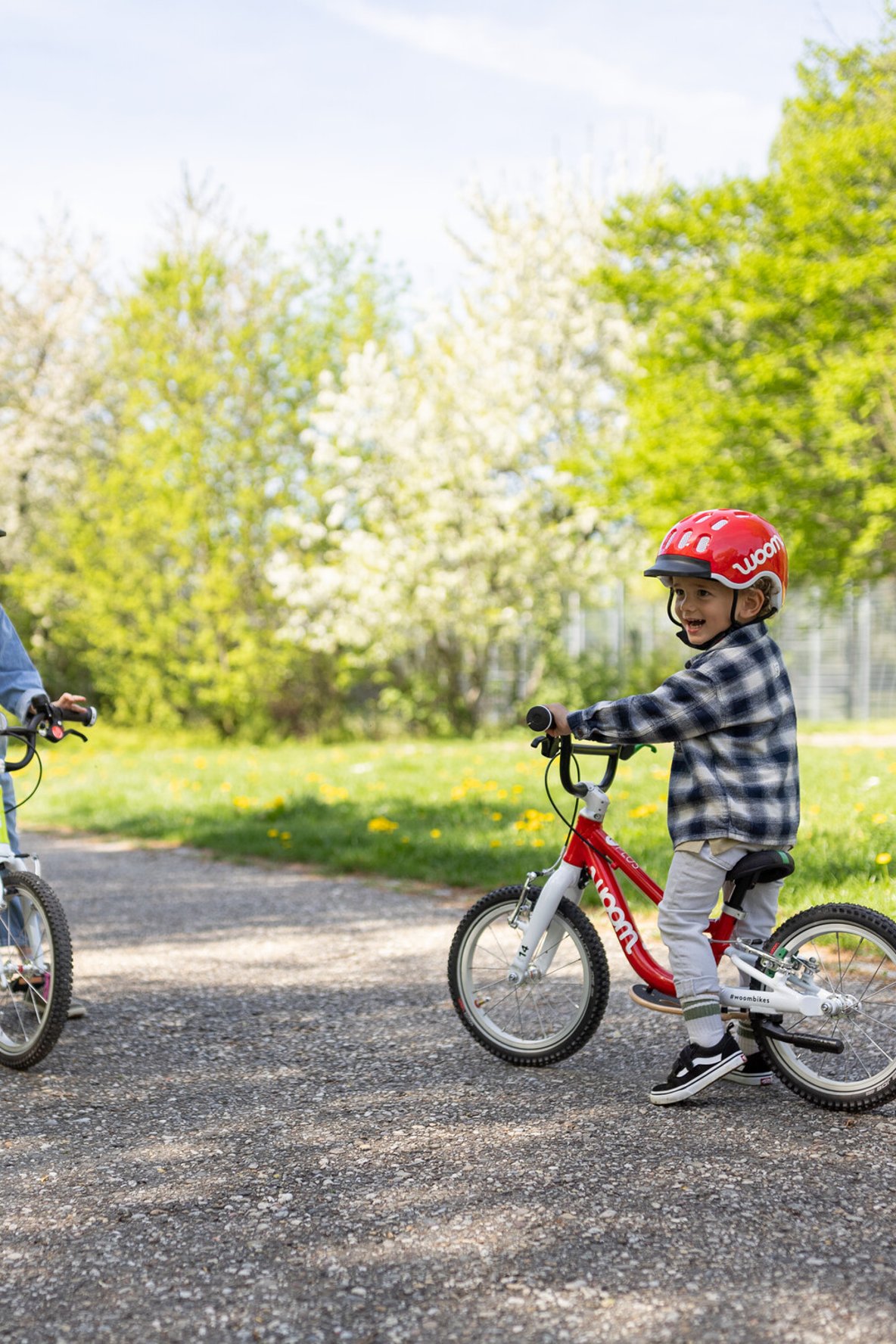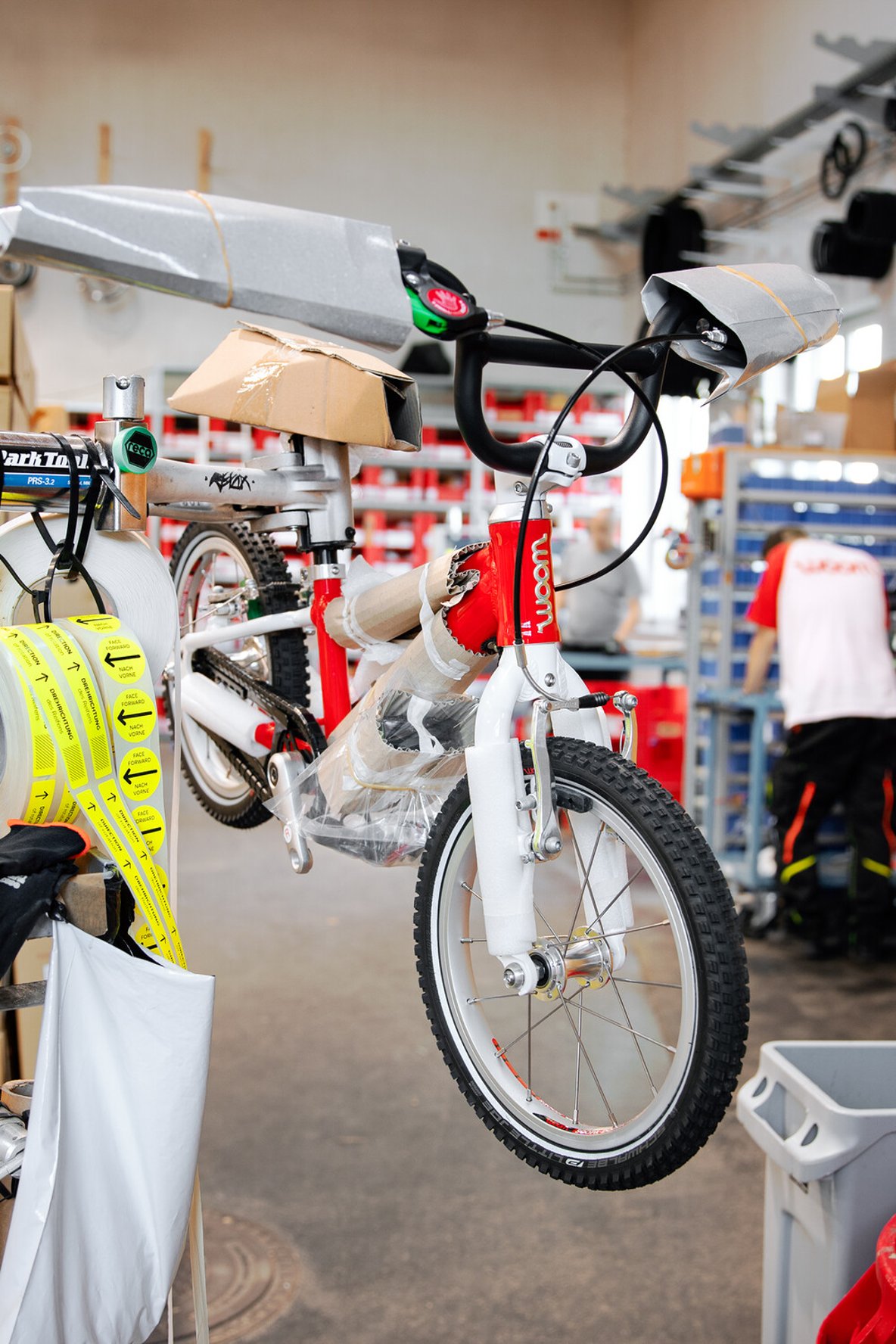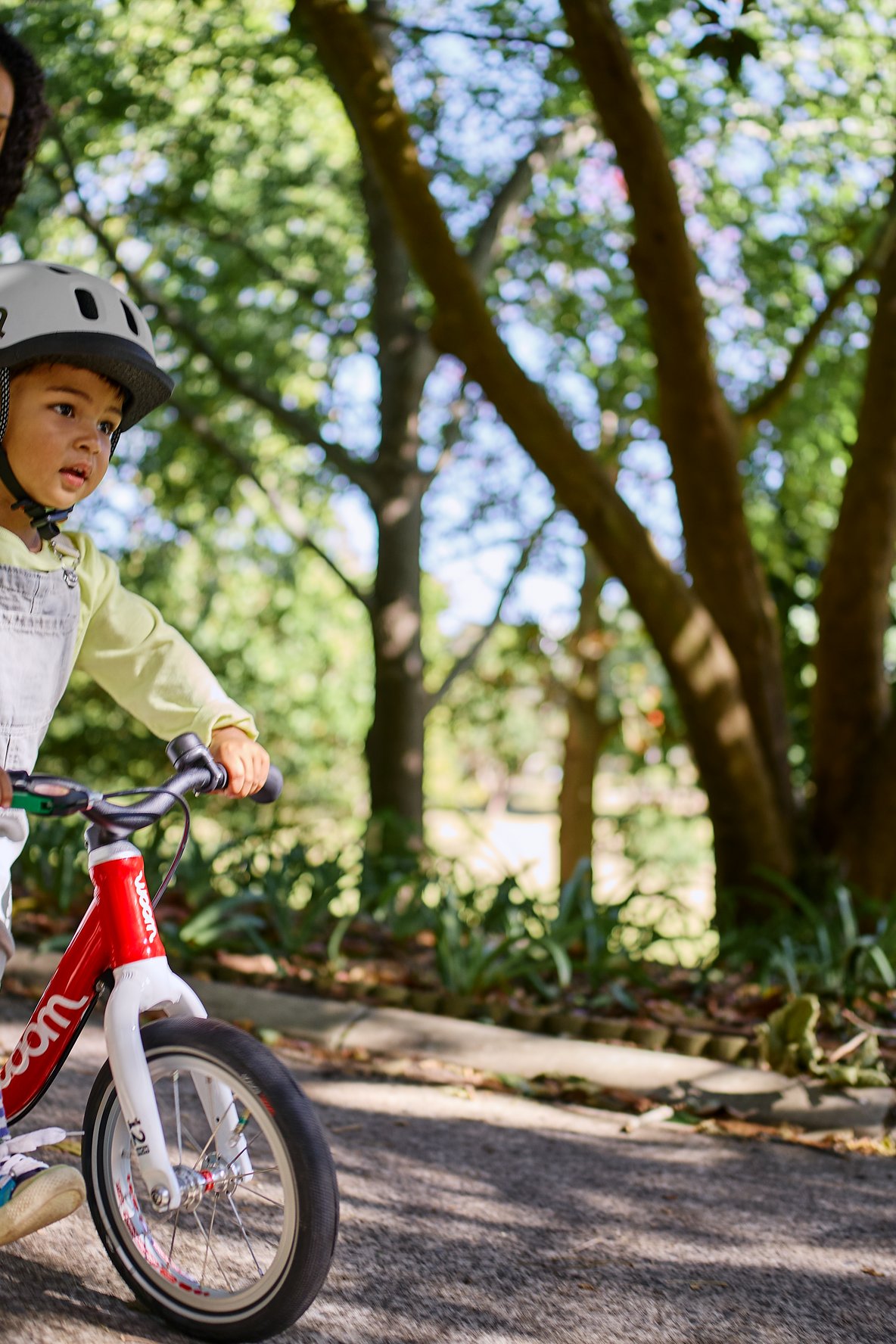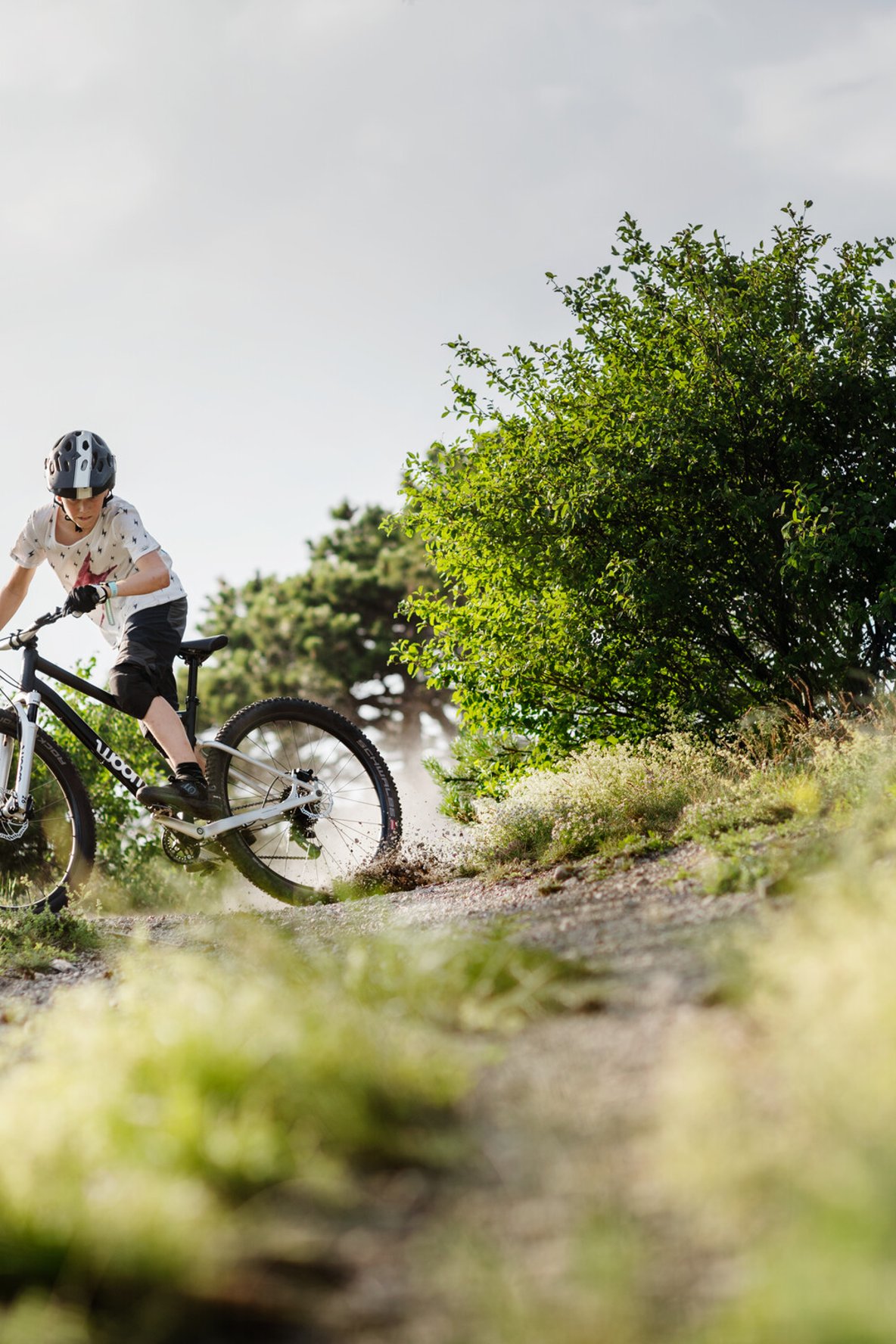Skills school: refine, improve, learn
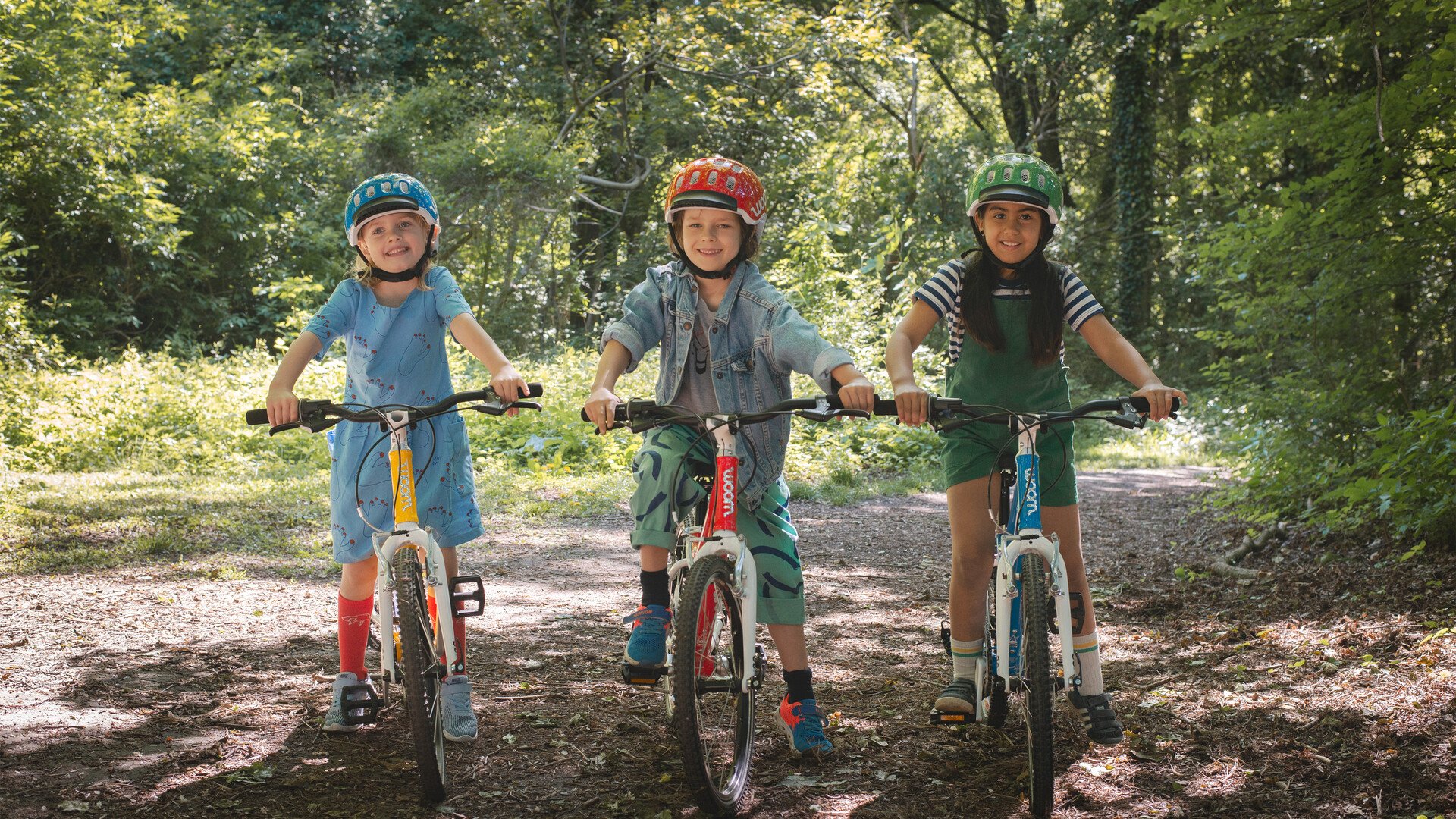
New horizons. It's not about riding straight ahead anymore: riding uphill, with tailwind, cornering and out into the world. Kids now sit effortlessly in their saddle. There is so much more to explore! One gear is no longer enough – it's time for a bike with several gears. woom bikes make it easy to learn how to shift gears while on the move. The next step is safely negotiating obstacles in nature or on the road.
Perfecting skills. No matter whether it is used to travel to school, for exercise or visit friends, bikes make you mobile. German inventor Adam Opel once commented: "No other invention combines usefulness with pleasure as deeply as a bicycle." Even if kids have already learned how to ride, it is always a good idea to learn new skills and practise old ones.
Changing gears
Smooth shifting keeps the material in good condition and is effortless. It is best to let your child shift through the gears while you call out which gear they should be in – the aim is to switch from one gear to another as quietly as possible.
#1: Practise shifting together for the first time on a flat surface. Tell your child to stop pedalling for a moment, show them how to twist the shifter and then let them start pedalling again gently. The point of this is to introduce them to the main principle in a playful way: ride fast, shift up; ride slow, shift down.
#2: You can test how quiet the shifting is in a somewhat hilly area. Before riding up a hill, let the child gain some speed. They should then lighten the pressure on the pedals, shift and then continue pedalling gently until the chain is firmly in place.
Tackling obstacles
Before going into any kind of traffic, children need to be able to safely tackle small obstacles. Whether riding over roots in a park, along bumpy paths or on a slippery surface, with just a little practice kids can overcome them safely.
#1: In order to ride over uneven surfaces, children need to get into the so-called 'basic position'. This means first getting their pedals parallel to the ground and then, while travelling relatively slowly, standing up on the pedals with slightly bent knees. With their hips centered over the bottom bracket, they need to slightly bend their elbows outward and their shoulders towards the handlebars. This position is ideal for absorbing and compensating uneven ground.
#2: To avoid getting caught on an obstacle like a curb, kids have to learn how to 'glide' over it by slightly lifting up the front wheel. Pushing hard on the pedals, it's easiest to slightly pull up on the handlebars and shift their body weight backwards to slightly raise the front wheel.
#3: Even wet surfaces, leaves and gravel can be obstacles. Riding on such surfaces has to be learned at a slow pace. Kids should try to ride and brake within a defined zone until they can easily and precisely stop at a line drawn on the ground.
Perfecting balance
When going on long rides, moving the saddle up slightly makes pedalling more efficient. This is done in small increments until a slight bend in the knee can be seen and only the toes touch the ground. Before achieving this, though, it is important that children have a good sense of balance. This can be learned with the following tips.
#1: Whether signalling at a crossing or wiping an annoying fly off their face – kids need to be able to feel just as confident riding with one hand as they do with two hands. This is best practised on a flat surface at a relatively slow speed without pedaling. First they should hold onto the handlebars in a relaxed position. Then they should let go for a second and see what happens. After a while they can move their hands further away from the handlebars.
#2: Braking without putting down their feet. This should be practiced on a soft surface. The child should brake to a stop, then, without putting down their feet, continue riding. It is much easier and even fun if the pedals are kept parallel to the ground.
#3: Balance can be practiced playfully with two buckets and small balls. Place one bucket upside down with a ball on it; place the other bucket further away. The goal is for the child to ride past the bucket that has a ball on it, take the ball off it and then throw it into the second bucket.
